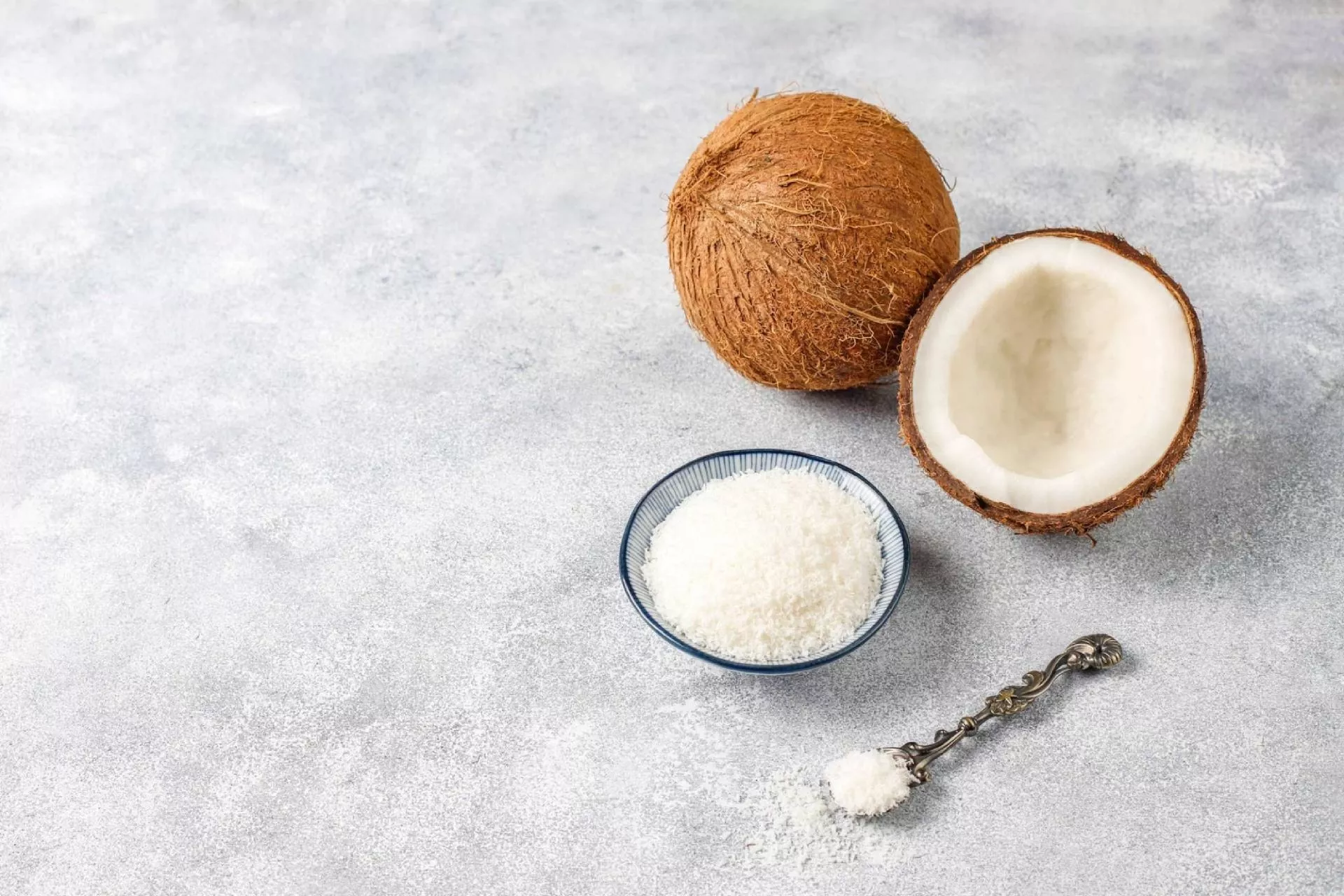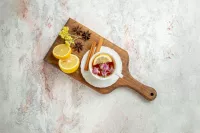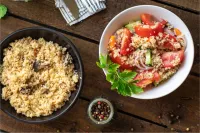Nutritional Value
One ounce (¼ cup) of coconut flour contains:
- Calories: 124
- Fat: 4 grams
- Protein: 5 grams
- Cholesterol: 0 milligrams
- Carbohydrates: 17 grams
- Fiber: 11 grams
- Sugar: 2 grams
Taste
It has a subtle taste and smell of coconut, but it's mild enough to blend with other flavours without overpowering them.
Blood Sugar Control
Coconut flour appears to have a low glycaemic index of 51, which means it should cause less of a spike in blood sugar levels than wheat flour, which has a glycaemic index of 69. This is because coconut flour is high in fat and fibre, which work to slow down the release of sugar in the bloodstream.
A Protein Source
Coconut flour is an excellent source of protein providing 18g per 100g, compared with just 12g in the equivalent amount of wholemeal flour.
However, the protein in coconut flour is an incomplete protein, which means it contains one in five of the essential amino acids which we need in our daily diet. ‘Essential’ means we must obtain these amino acids from food as the body cannot make them itself. Protein is essential in the diet as it plays a vital role in the growth and repair of the body as well as for functions such as immunity.
Gluten-Free
Pure coconut flour is a gluten-free product. However, always check the label, especially if you have coeliac disease or a gluten allergy. Some brands may contain added ingredients which contain gluten, or may be produced in a factory which handles gluten-containing products. If there is a risk of cross contamination, this should be clearly marked on the label.
Substituting Flour for Coconut Flour
The rule of thumb is to substitute only 20 percent of coconut for wheat flour.
It is important to be aware that flour made from coconut becomes dense and soaks up a lot of moisture when it bakes. To compensate for the moisture imbalance, try adding 2 tablespoons extra liquid for every 2 tablespoons coconut flour you substitute for regular flour.
Furthermore, coconut flour can tend to clump up, so be sure to fluff it with a fork before measuring and mixing.
Coconut Flour Recipe Ideas
- Coconut Flour Lemon Cookies
- Coconut Flour Brownies: This gluten-free take on brownies made with coconut flour, flax eggs, and apple puree doubles as a vegan treat with a sweet cashew frosting.
- Keto-friendly Bread: Made with a mixture of almond flour and coconut flour, the result is a light and airy bred that has a texture similar to angel food cake.
- Vanilla Coconut Super Bars. These healthy coconut flour bars are full of delicious and nutritious ingredients such as walnuts, almonds, goji berries, hemp seed hearts, and Greek yogurt.
- Gluten-free Snowball Cookies. These coconut flour cookies can easily be made paleo-friendly by substituting ghee for the butter and finely powdered coconut sugar for the confectioners' sugar.
- Coconut Flour Banana Nut Muffins. Start your day in a deliciously healthy way with protein-packed coconut flour muffins.
- Coconut Coffee Muffins. Make these wholesome muffins with just six ingredients you probably already have on hand: coconut flour, coconut oil, eggs, brewed coffee, brown sugar, and coconut flakes.
- Hawaiian Coconut-Banana Bread. Coconut flour, coconut flakes, and coconut sugar add tropical flavour to this banana bread.
These are just a few delicious and easy recipes for those interested in the potential of the versatile coconut flour. For the many gluten-allergic people out there, fear not. There is a myriad of tasty alternatives to indulge in. Cake can still be delicious. Indulgence is not just for those who enjoy decadent desserts. Coconut flour has opened up a wickedly good choice of delectable delights. Loosen your belts, spoil yourselves, leave all guilt at the door and dive in. The diet can wait another week.

 Healthy Foods to Bring You Through the Winter
Healthy Foods to Bring You Through the Winter How to Cook Couscous
How to Cook Couscous



